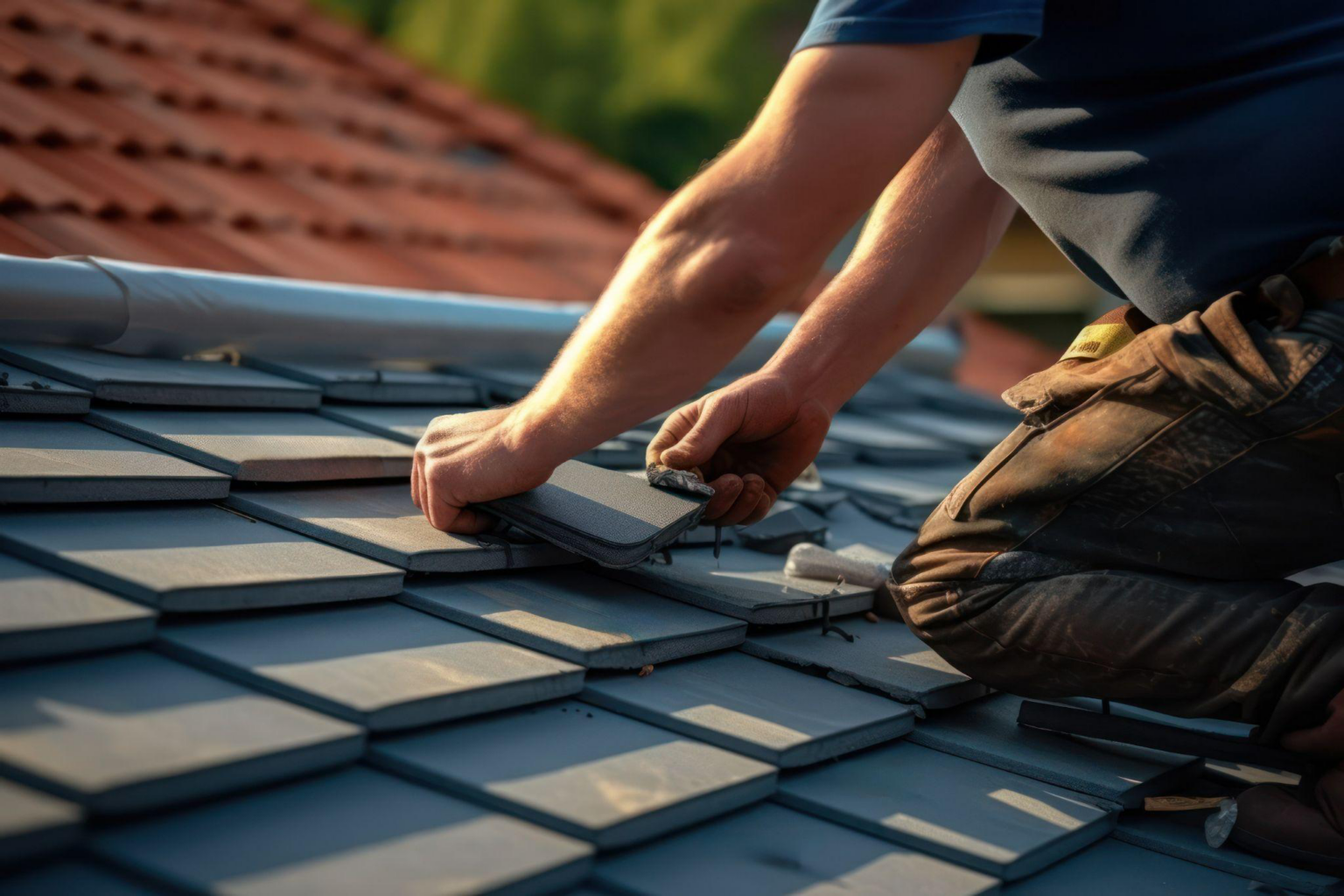
DIY Roofing Tips
While they seem like simple structures atop our homes, roofs are pivotal in keeping us safe, dry, and cozy.
Picture this: you’re cuddled up on a rainy day, sipping a hot cup of cocoa and listening to the soothing pitter-patter of raindrops on your roof.
Bliss, right? Well, that’s the magic of a functional roof!
It’s not just a mere covering; it’s a guardian against the elements, a shield from the scorching sun, and a key player in maintaining the structural integrity of our humble abodes. It deflects rain, snow, hail, and even the occasional curious squirrel. It keeps our interiors dry, preventing leaks, water damage, and mould growth. Moreover, a well-maintained roof acts as a thermal barrier, keeping us cozy in the winter and cool in the summer while also reducing energy consumption and utility bills.
When it comes to getting the job done, professional roofers are the masters of their craft. With their expertise, experience, and finesse, they tackle roofing projects with precision and efficiency. Professional roof painters and restorers are also essential in maintaining a healthy roof surface and extending its lifespan.
Roofs may not be our first thought regarding home improvements, but they are perhaps the most important factor for ensuring a comfortable and safe living environment. Taking care of your roof doesn’t have to be complicated or expensive; regular inspections, maintenance services, and occasional repairs can go a long way. Your roof is your home’s first line of defence, so pay attention to it! It will reward you with years of reliable protection and peace of mind.
DIY Roofing Tips
1. Safety First!
Regarding DIY roofing, safety should always be your foremost concern. Before stepping on the roof, take the necessary precautions to protect yourself from accidents. Start using a sturdy and reliable ladder appropriate for the height and type of roof you’ll work on. Ensure the ladder is properly positioned and secured before climbing up.
Additionally, consider using a safety harness or fall protection system. These devices are designed to prevent you from falling off the roof in case of a slip or loss of balance. A safety harness comprises a harness that wraps around your body and is connected to a secure anchor point. It provides extra protection and peace of mind while working at heights.
2. Assess the Damage
Take a thorough look at your roof and identify any signs of damage. Keep an eye out for missing or cracked shingles, leaks, or sagging areas. This detective work will guide your DIY efforts and help you prioritize repairs.
3. Gather the Right Tools
Each tool serves a specific purpose and contributes to the efficiency and quality of your work. Here’s a closer look at some essential tools and their significance:
- Hammer: A sturdy hammer is a roofing essential. It is used to drive roofing nails into shingles, secure flashing, and adjust as needed. Look for a hammer with a claw end to easily remove nails or other materials.
- Roofing Nails: These specialized nails are designed for roofing applications. They have large heads and short shanks, providing excellent grip and preventing them from pulling out easily. Roofing nails secure shingles, underlayment, and other roofing components.
- Utility Knife: A utility knife with a sharp and retractable blade is indispensable for roofing tasks. It allows you to make precise cuts on roofing materials, trim shingles, and remove old sealant or flashing. Ensure you have spare blades on hand for easy replacements.
- Pry Bar: Also known as a crowbar or roofing bar, a pry bar is useful for removing damaged or old roofing materials. It helps lift and separate shingles or other components without causing excessive damage. Choose a pry bar with a flat, sturdy end for effective leverage.
- Roofing Sealant: Roofing sealants, such as caulk or roof cement, are used to fill gaps, cracks, or seams in your roofing system. It provides an additional layer of protection against water penetration and reinforces the integrity of your roof. Make sure you select a sealant specifically designed for roofing applications.
By arming yourself with these trusty companions, you’ll be well-prepared to conquer any roofing challenge that comes your way. These tools enable you to effectively handle tasks such as nailing shingles, making precise cuts, removing old materials, and sealing gaps.
4. Stay Weather-wise
Mother Nature can be unpredictable, so choose a calm, dry day for your roofing endeavour. Wind and rain are the enemies of successful DIY roofing, so wait for fair weather to ensure a smooth and hassle-free experience.
5. Clear the Stage
Prepare your rooftop for action by removing any debris or lose materials. Sweep away leaves, branches, and other clutter that might obstruct your path to roofing glory. Remember, a clear stage ensures a seamless performance!
By following these tips and taking a proactive approach to roof maintenance, you can protect your home while gaining a sense of accomplishment and a deeper appreciation for roofs’ crucial role in our lives.
Remember, DIY roofing can be a fulfilling and cost-effective endeavour, but it’s essential to approach it with caution and respect for your limitations. Hiring professional roofers is best if you’re unsure how to do it.
And for reliable roof painting and restoration projects, Brisbane Roof and Paint is the contractor to trust!







